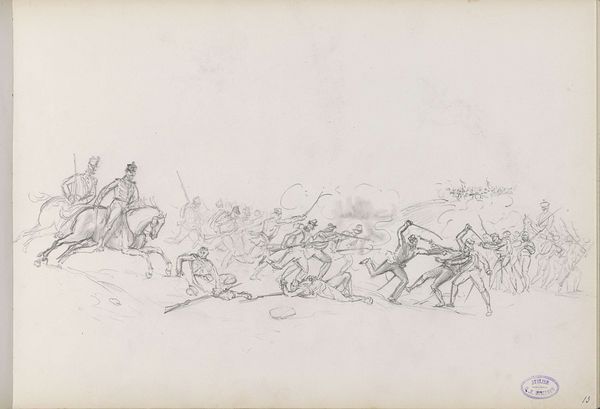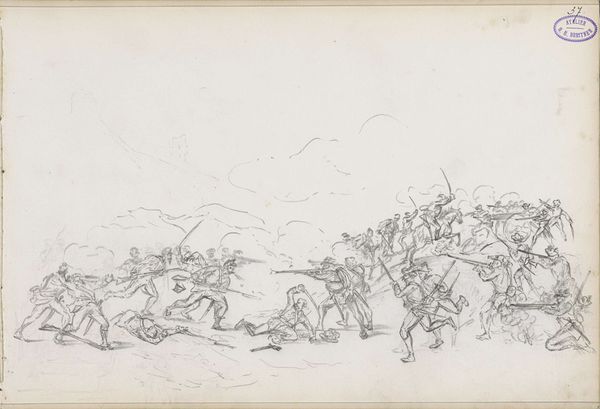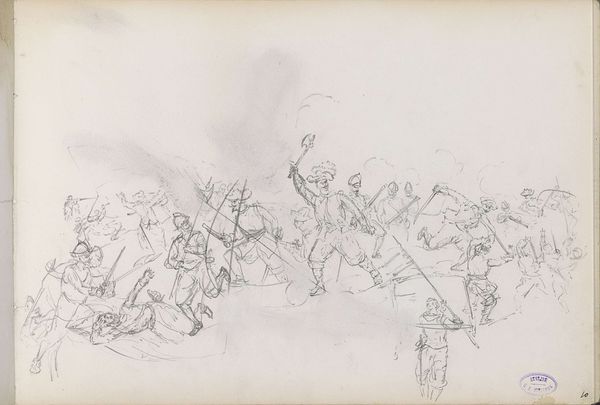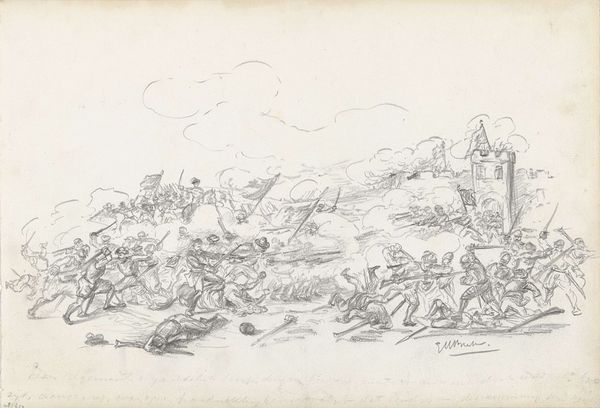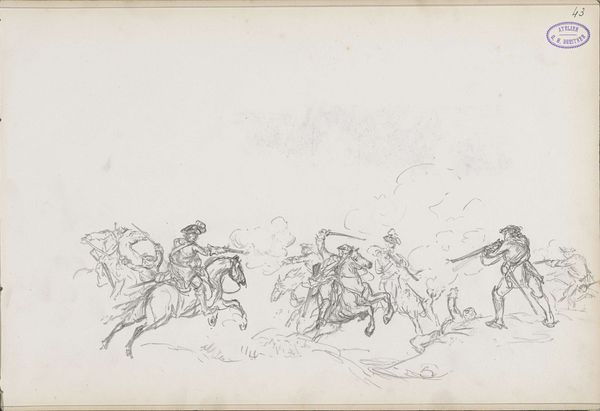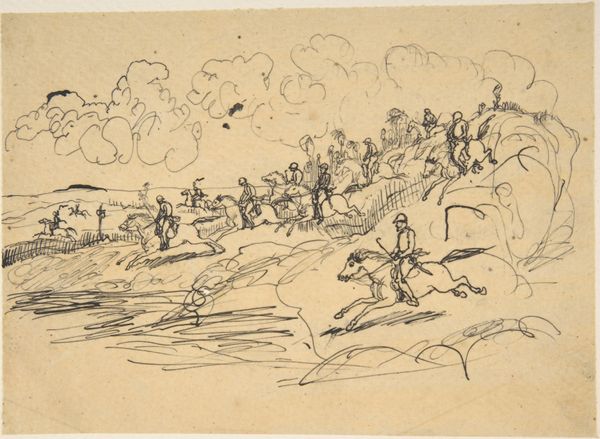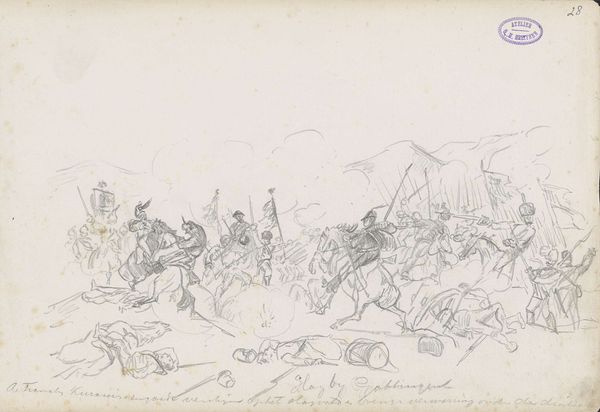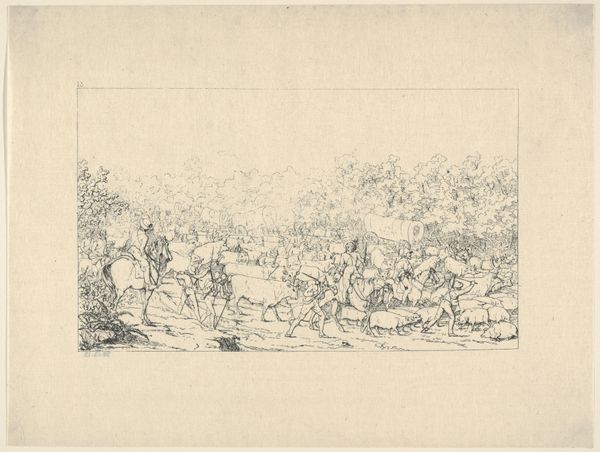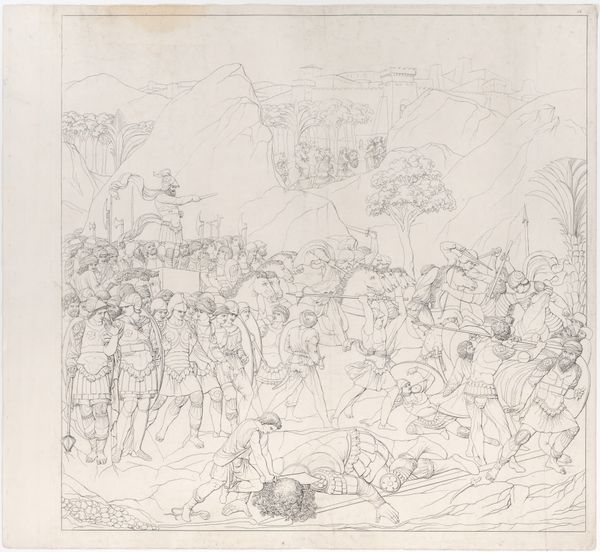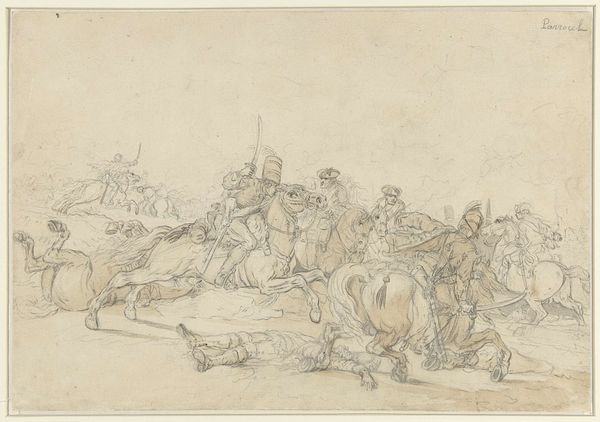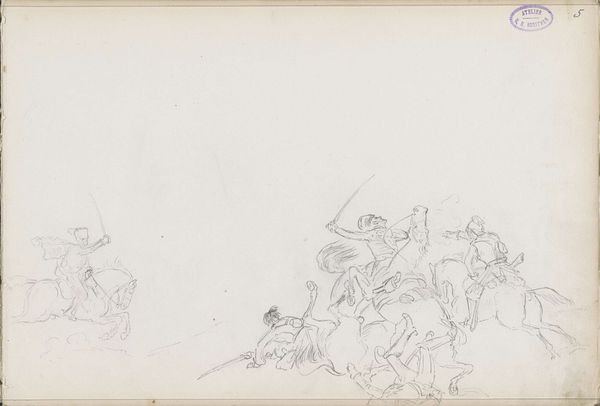
Copyright: Rijks Museum: Open Domain
Curator: Let’s turn our attention to this pencil drawing titled "Strijdende soldaten te paard," or "Soldiers Fighting on Horseback," created by George Hendrik Breitner between 1872 and 1879. What's your initial take on this bustling scene? Editor: My first impression is a flurry of anxious energy. It’s not overtly graphic, but the hasty lines and implied movement evoke a sense of chaotic violence. There's a definite undercurrent of the futility of war threaded into it. Curator: Breitner certainly captured a dynamism here. The mass of figures charging forward calls to mind historical battles and the age-old theme of men engaged in conflict. Look at how he employs light and shadow to highlight specific figures, lending them almost archetypal qualities of aggression and desperation. It suggests conflict as part of the human narrative itself. Editor: I agree, the composition amplifies that historical weight. But beyond the timelessness of conflict, I see it also commenting on class and power dynamics. The facelessness of most of the soldiers emphasizes their expendability, mere cogs in a machine driven by higher powers. I can't help but feel the drawing questions that historical valorization of war. Curator: An astute observation. There is that distinct contrast between the anonymous masses and what details we get of some key individuals. In some respects, these could even symbolize aspects of the human psyche writ large onto a field of battle. The forward charge resonates as a metaphor for ambition, aggression, even our own internal struggles for dominance. Editor: It's interesting how you relate that charge to an internal drive. From my point of view, seeing the bodies fallen on the field speaks to broader conversations around bodily autonomy, the state’s influence on individuals, especially within contexts of compulsory conscription and nationalistic fervor. Who dictates the stakes for this sacrifice? Curator: Your reading certainly adds layers to understanding Breitner’s view on sacrifice. I am also fascinated by how minimal the detailing is, letting the scene still breathe with possibility rather than fixing it with solid reality. Editor: It truly offers an opportunity for multifaceted conversations—not just about this single moment, but its lasting echoes in society. It's more than a picture of soldiers, it is, at its heart, about those historical-political forces acting on individual bodies.
Comments
No comments
Be the first to comment and join the conversation on the ultimate creative platform.
